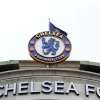Sometimes it’s the little things that decide a bet slip: a cool-headed penalty, a single precise penalty shot, or a couple of steady trips to the line at the end. The market for the total of made penalties is niche but highly appealing: limits are lower, the line contains more errors, and a prepared bettor has plenty of edges. Below is a structured method for turning fouls and infractions into predictable numbers.
Terminology Without Confusion
To speak the same language, let’s fix the definitions by sport:
- Basketball — “free throws.” Market: the total of made free throws by one team or by both teams.
- Football — we mean penalty kicks. In the bet slip this is usually “number of scored penalties” (important to distinguish from “will a penalty be awarded”).
- Hockey — an in-game penalty shot and/or shootout attempts (post-match series). A bookmaker may count only regulation/OT, or include the shootout — always read the market rules.
There are also similar markets in rugby and American football (made set-piece kicks), but here we focus on the trio: basketball, football, and hockey.
How to Read the Line and Where the Value Hides
The book offers a threshold (for example, Over 2.5 made penalties) and a price. Notes:
- In basketball you’ll see team/game totals and sometimes Asian variants (1.75/2.0).
- In football, “Will a penalty be scored?” (0.5) is more typical; extended lines (1.5 and higher) are rarer.
- In hockey, track whether shootouts are included. If yes, overs come closer, especially in leagues with frequent shootouts.
First estimate the expected number of events (λ), then compare with the line. If your estimate gives 0.72 expected scored penalties and the line is 0.5 at a fair price — that’s an Over candidate. With a 1.0 line the decision is thinner and the price becomes decisive.
Factors That Actually Move the Probability
Basketball
- Pace and style: more possessions → more contact, bonus situations more often, more free throws.
- FTr (Free Throw Rate): free-throw attempts relative to field-goal attempts. Teams with a high FTr consistently seek contact.
- Foul trouble for key defenders: an early 2–3 fouls on the main “big” sharply raises the opponent’s trips to the line.
- Endgames: intentional fouling at −4…−8 in the final minute inflates free-throw counts.
Football
- Attacking style: teams entering the box via dribbles/through balls draw more fouls in dangerous areas.
- Referee profile and VAR: refs with high penalty-award rates + leagues where VAR actively confirms contact raise penalty likelihood.
- Match context: an underdog sitting deep while the favorite overloads the flanks increases penalty risk.
Hockey
- Tournament format: where draws go to OT + shootout, and the series is included, the total of made attempts in the shootout matters for this market.
- One-on-one specialists: forwards who force infractions on breakaways increase in-game penalty-shot probability.
- Goaltenders: shootout save% and a “penalty-killer” reputation can drag conversion down.
Don’t overlook weather/surface (a slippery pitch boosts contact in football), leaders’ form, rotation, and schedule (fatigue → more fouls).
A Short Modeling Algorithm
- Estimate attempts: how many fouls leading to penalties/penalty shots teams generate/concede over the season and in the recent window (rolling form beats raw averages).
- Estimate conversion: make-rates by team and by executors (goalkeeper/kicker in hockey and football; line shooters in basketball).
- Build λ: expected number of made events = expected attempts × average make-rate.
- Check market rules: regulation only or with OT/shootout? This shifts λ.
- Compare with the line: use at least a Poisson/binomial approximation for Over/Under probability. Bet only when there’s clear value.
In-Play: Opportunity Windows Open Suddenly
- Early foul trouble in basketball → the free-throw total line may lag. Enter Overs if the opponent is about to reach the double bonus.
- VAR pause in football → the market may not have fully adjusted; expecting confirmation, you can capture micro-value.
- Physical games with many penalties in hockey → higher chance of an in-game penalty shot and of a shootout at the end.
Working rule: don’t enter on emotion; enter on information the market hasn’t fully priced yet.
By Sport — Quick Examples
Basketball (Example)
Team A averages 18 made free throws per game, Team B 14; pace is high and both love attacking the paint. The game is lined at a total of 29.5 made. Considering form, a ref known for calling contact, and a foul-heavy finish, your λ ≈ 32. At 1.90 on Over 29.5 this is +EV.
Football (Example)
The league leaders meet a relegation struggler. Over the last 10 rounds there are ~0.6 penalties awarded per 90 minutes combined, with a ~78% conversion. Expected scored penalties ~0.47. The “Penalty To Be Scored — Yes/No” market offers 2.10 on “Yes.” If you factor in stylistic drivers (flank pressure, active dribbling, a ref with a high baseline) and reach ~0.60–0.65 scored, “Yes” becomes a value bet.
Hockey (Example)
Roughly a quarter of games reach a shootout. Both teams draw many ties, and the goalies are mediocre in shootouts. The market offers a nice price on Over 1.5 successful shootout attempts including the series — reasonable under your assumptions, but only if the rules explicitly include the series after OT.
Bankroll Management and Working With Margin
- Flat staking or Kelly fraction: avoid martingales/chasing. The market is small and variance is high.
- Margin: on special markets it’s often higher than on 1X2/main totals. Your edge must cover the juice.
- Limits and discipline: split entries; don’t hop aggressively between books with big volume — accounts live longer with measured load.
Pre-Bet Checklist
- Have you read the market rules? (time regulations, are shootouts/VAR counted, who qualifies as the executor)
- Referee/offside line/style: are there objective drivers of more attempts?
- Are executors’ conversions up-to-date? (penalty taker’s form, free-throw percentage, goalie’s recent data)
- Match context: motivation, points at stake, rotation, fatigue, weather.
- Any in-play “window”: foul trouble, tempo change, defender injury, VAR pause?
- Does the price cover margin and variance? If it only “kinda looks good,” pass.
Common Mistakes and How to Avoid Them
- Market confusion: betting “a penalty will be awarded” instead of “a penalty will be scored.” Check the wording.
- Ignoring the referee: ref profile is among the strongest predictors of attempt volume.
- Blind faith in averages: without adjusting for form and opponents, averages distort the picture.
- Overrating “hot streaks”: several recent penalties don’t guarantee the trend continues.
From Idea to Numbers: Build Your Own Line and Monetize the Gaps
Your edge in this market isn’t “gut feel” but your own probability estimates. Build a database of attempts and conversion, factor in referees, team styles, regulations, and schedule, and model expectations for the specific match. Compare with the book’s line; enter only when there’s a clear discrepancy and you stick to bankroll discipline. Over time you’ll spot places where books lag — especially in-play. If you can catch a “corridor” between lines at different operators, use it, but remember bankroll resilience is more valuable than a one-off wow-effect. Winners here are those who calculate better than others — and do it systematically.






